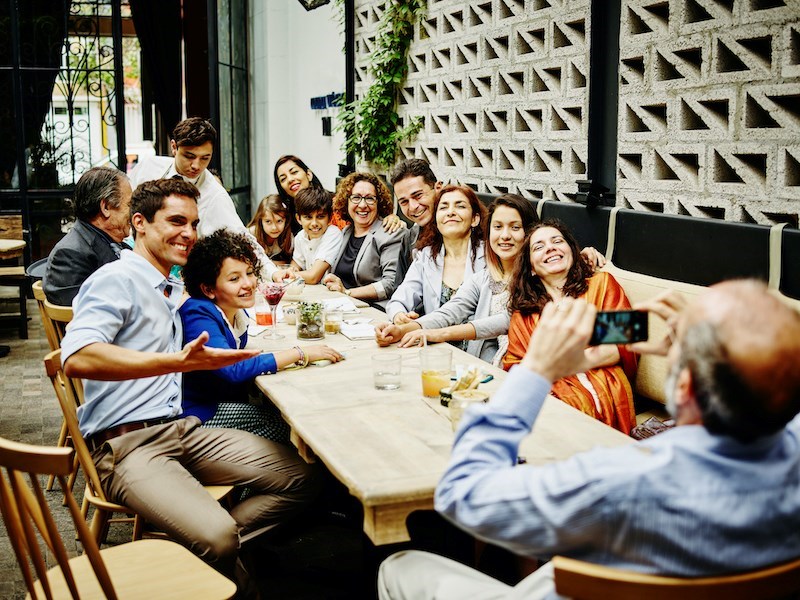With Step 3 of B.C.’s “Restart Plan,” which comes into force today, July 1, restaurants, bars, and pubs will no longer have to restrict hours for serving liquor or have six-person caps on tables.
“I believe we can take the next step forward,” said Premier John Horgan at a June 29 press briefing.
Said B.C.’s Public Health Officer Dr. Bonnie Henry, “We’re moving most of the restrictions at restaurants, bars, and pubs,” clarifying that venue capacity limits have been increased to either 50 people, or 50 per cent of the venue’s capacity.
That means that if a venue can hold 60 people, the limit would be 50 people. If the venue can host 500 people, the new capacity limit would be 250.
The cap on group seating at restaurants was first implemented in the province back in May 2020, when businesses were permitted to re-open following a full ban on indoor dining implemented two months prior at the onset of the pandemic in B.C.
While in Step 2, which began June 15, public health orders were amended to allow liquor sales at restaurants to go until midnight, Step 3 removes all restrictions and returns liquor sales to normal for licensed B.C. establishments.
During Step 3, businesses will gradually transition to new communicable disease plans, with guidelines for these plans released by WorkSafeBC on June 28.
“These plans will continue to include physical barriers at many business and retail settings. Capacity limits, formal health screening tests and directional arrows, as well as other physical distancing measures will no longer be required. However, they may still be used during this transition period,” said a media release from the premier, Ministry of Health, and Ministry of Jobs, Economic Recovery and Innovation.
Not changing will be the restrictions on socializing between tables—this will also be a rule for nightclubs—which will be able to re-open, with seated parties of up to 10 permitted as of July 1. Henry said details of what will be permitted has been discussed among leaders in the sector, and will include distancing measures and barriers. But there will be no dancing allowed in nightclubs.
“We’re in different places,” acknowledges Henry of where B.C. residents and business owners stand at this moment when it comes to comfort levels with reduced restrictions, adding later in the conference that there’s no need for people to provide proof of vaccination.
Another significant change under Phase 3 of the Restart Pan is that wearing masks in public settings will be recommended, but not required.
“I’m going to be wearing a mask if I’m in touch with a group of people that I do not know, if I’m on a bus, I’m on a ferry, I’m on an airplane,” Horgan said. “These are recommendations, not directives.”
Other key prongs of Step 3 are:
• allowing all indoor fitness classes;
• allowing some indoor spectators at sporting events;
• ending size restrictions for indoor and outdoor personal gatherings;
• increasing capacity at indoor and outdoor organized gatherings;
• allowing fairs and festivals to operate;
• ending group-size restrictions at restaurants;
• allowing kids’ sleepovers;
• allowing Canada-wide travel for British Columbians, and welcoming all other Canadians.
“We’ll be welcoming people from other provinces, preferably vaccinated,” Henry said.
Vancouver International Airport (YVR) said it’s ready to welcome back travellers.
“We are pleased to see the safe, phased approach that government is taking to advance restart plans in B.C. and Canada for those who are able to travel. We will continue to follow these plans and the direction of public health authorities to implement measures focused on keeping our communities safe while beginning to reopen the visitor economy,” said Robyn McVicker, YVR’s vice president of passenger journey, in a statement.
The airport cautions the process of passing through the border will be a bit different than what people may be used to, and travellers are asked to be prepared and patient.
For example, those returning to Canada need to follow the federal government’s entry requirements, including pre-departure testing, using the ArriveCan app and pre-registering for an arrival test at the airport and quarantine plans where applicable.
Security screenings for departing flights will also include a few extra steps, including temperature checks.
Masks also continue to be mandatory in the airport and on flights.
Henry said that while the mask mandate has ended, wearing face coverings still helps prevent the spread of disease.
The fourth, and final, step in the province’s reopening is slated to go into effect no earlier than Sept. 7.
The state of emergency will be lifted this week but the public health emergency will remain.
- with files from Cindy E. Harnett, Lindsay William-Ross, and Glen Korstrom




